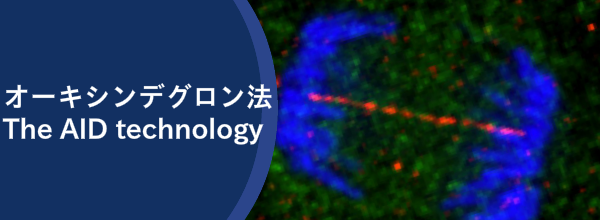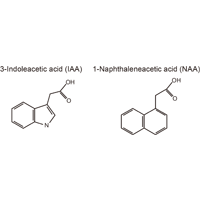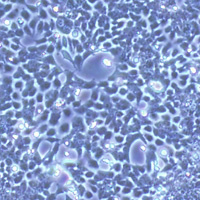
By focusing on the recent finding that the plant hormone auxin induces rapid degradation of the AUX/IAA transcription inhibitors, we established the auxin-inducible degron (AID) technology by transplanting the auxin-degradation pathway to other eukaryotic cells. This technology enables us to deplete a protein of interest in a half-life of less than 30 min by the addition of auxin to culture medium. The AID technology has widely been used in yeast studies. We apply this technology to mammalian cells.
Direct and rapid protein degradation
Auxin includes chemicals such as IAA (indole-3-aceticacid) and NAA (1-naphtalene acetic acid) and induces degradation of the AUX/IAA transcription inhibitors in plants. For the degradation, an SCF ubiquitin ligase complex containing the TIR1 protein is activated via the association of auxin with TIR1. Because the core SCF components are conserved in all eukaryotic cells, it is possible to transplant the degradation pathway to yeast and mammalian cells by expressing TIR1. In those cells expressing TIR1, a protein fused with a degron (AID degron) derived from AUX/IAA can be rapidly degraded in the presence of auxin.
Introducing the AID tag to endogenous genes in human cells
It was difficult to introduce a tag to endogenous genes in human cells in the past. However, the CRISPR/Cas-based gene editing made a revolution in human genetics. We recently developed a simple method of tagging endogenous genes. By using this technology, it is now possible to carry out bi-allelic tagging by one transection.
Controlling essential protein in human cells
We recently established a new method of generation of human AID mutants. In these cells, proteins of interest can be depleted in a half-life of 20 min. It is now possible to characterize essential genes, which are 9% of all genes in the genome. We are currently interested in applying the AID technology to mouse ES and human iPS cells.
Request Information
Plasmid materials for human cells
All published plasmids for the constrcution of human AID mutants are available from Addgene and NBRP (Gene Engineering Division). Human HCT116 CMV-OsTIR1 cell line is available from RIKEN cell bank. Regarding HCT116 Tet-OsTIR1 cell line, please write to the cell bank (cellkitaku@brc.riken.jp) for the details.
Plasmid materials for budiing yeast and budding yeast lines
All published materials are available from NBRP-Yeast. Please look at this protocol for construction of yeast AID mutants.
About the AID technology (in Japanese; Feb 9th, 2017)

















